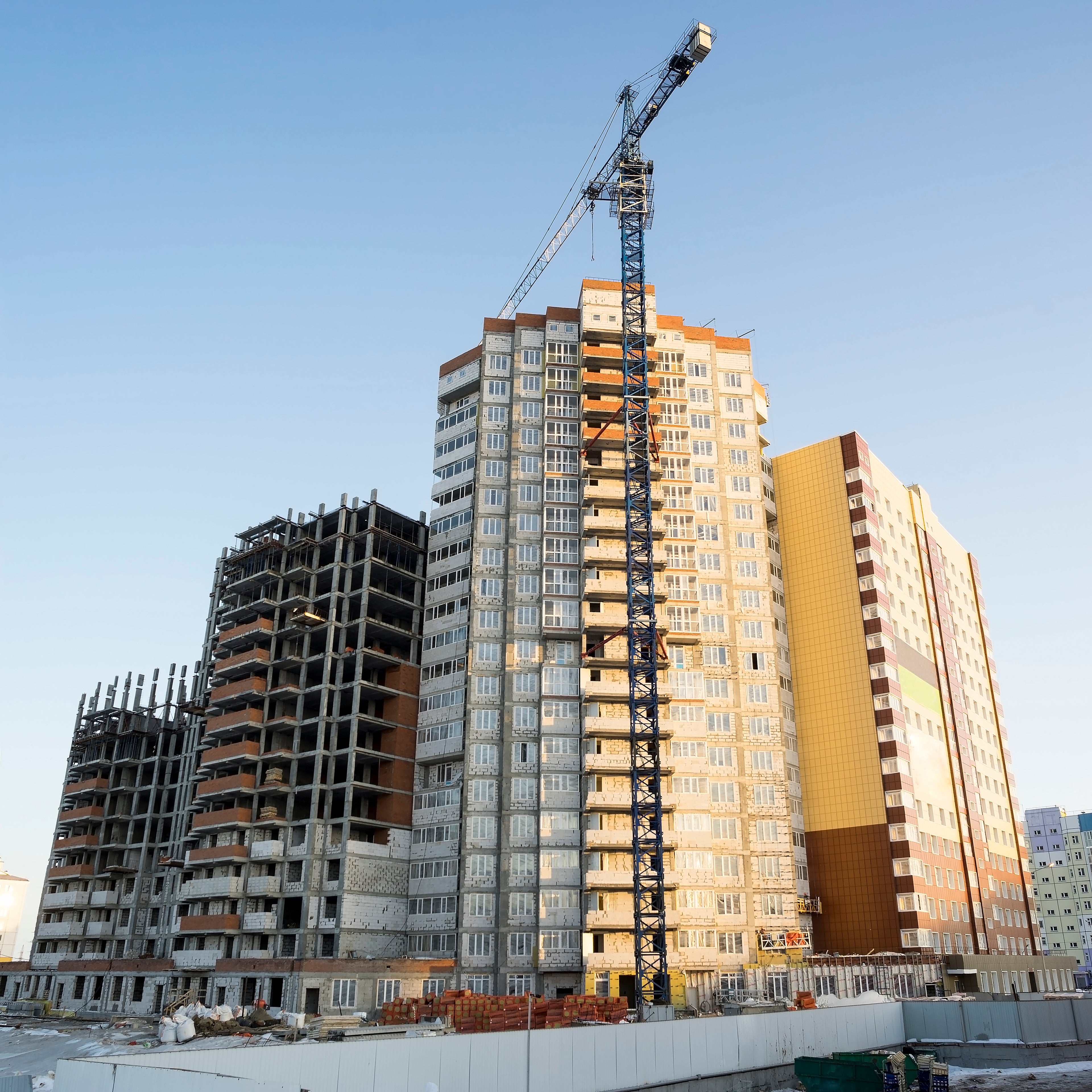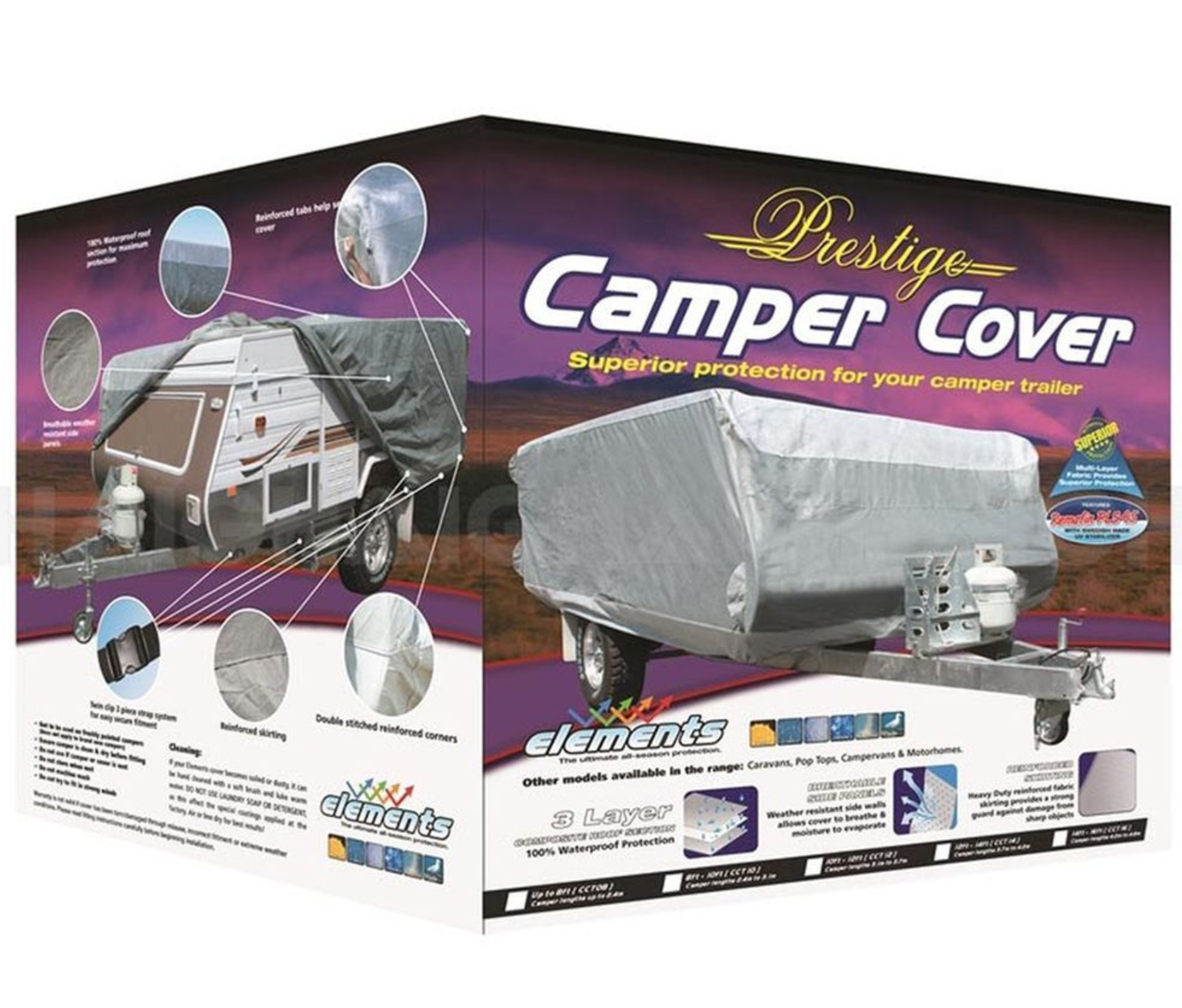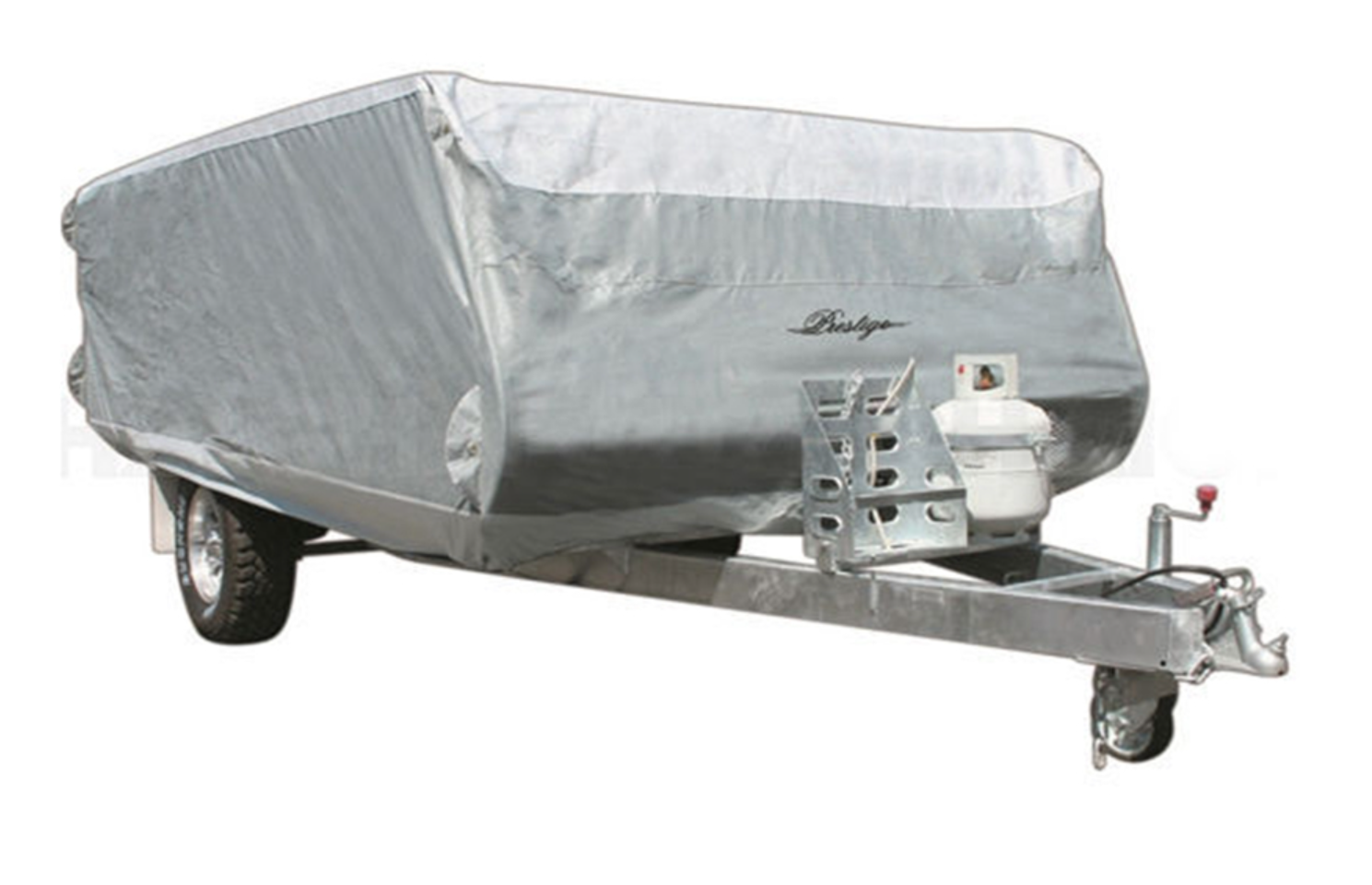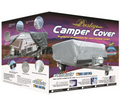Camper Trailer and Pop Up Caravan Cover 2.4m - 3.1m
Keep Your Camper Protected Year-Round
Shield your camper trailer from Australia’s tough weather with this heavy-duty Camper Cover. Designed to fit trailers from 8ft to 10ft (2.4m to 3.1m), it offers all-around protection from dust, UV rays, rain, bird droppings, tree sap, and more — perfect for preventing long-term wear and tear.
Key Features:
-
100% Waterproof triple-layered roof for maximum weather protection
-
UV-stabilised materials to guard against sun damage
-
Breathable, water-resistant side panels to prevent moisture build-up
-
Lightweight for quick and easy installation
-
Reinforced skirt with elastic hem for a snug, secure fit
-
Soft, non-abrasive fabric that’s gentle on your camper’s finish
-
Reinforced corners and double-stitched seams for extra durability
-
Mildew and rot-resistant material for long-lasting use
-
Comes with two front and two rear securing straps for added stability
Cover Dimensions:
(L) 3.10m x (H) 1.22m x (W) 2.23m
Not only does this cover keep your camper looking great, but it can also help maintain its value when it’s time to sell or upgrade.
Care Tips:
To keep your cover in great shape, just rinse with water and let it air dry. Avoid using detergents, as they may damage the fabric.

FAQs
What is an Australian Builders Plate (ABP)?
An Australian Builders Plate (ABP) or boat builders plate is a mandatory certification label for recreational boats in Australia. It provides essential information about the boat’s compliance with safety standards, ensuring it meets regulatory requirements.
Contact Compliance Plates Australia today for expert services in trailer compliance plates, Australian Builders Plates for boats and motor vehicle manufacturers’ compliance plates — all of which ensure adherence to stringent Australian standards.
Why is an ABP required for boats in Australia?
The ABP is required to demonstrate that a boat complies with Australian safety standards. It ensures boat owners and operators access crucial safety information, promoting safer boating practices.
What information is displayed on an ABP?
An ABP typically includes details such as:
- Manufacturer or importer’s name and contact details
- Boat’s model and hull identification number (HIN)
- Maximum weight capacity
- Maximum engine power
- Maximum number of passengers
- Recommended safe loading instructions
- Compliance statement that meets legislative requirements
How do I obtain an ABP for my boat?
To obtain an ABP:
- Contact the boat’s builder, importer or a qualified Marine Surveyor.
- Ensure all required information, including calculations, is accurately determined.
- Apply for the ABP through a registered provider like Compliance Plates Australia, ensuring compliance with local regulations.
What is a Hull Identification Number (HIN)?
A Hull Identification Number (HIN) is a unique 15-character identifier assigned to boats for identification purposes. The law requires it to be affixed in two locations on the boat, including one visible on the transom.
Why is a HIN important for boats?
The HIN serves as a boat’s “serial number,” facilitating identification in case of theft, accidents or regulatory compliance checks. It also details the boat’s manufacturer, model and build date.
How do I find the HIN on my boat?
The HIN is typically located on the boat’s transom (the rear portion), as well as in a hidden location known to the manufacturer or importer. It may also be found on the vessel’s registration paperwork.
Why Choose Compliance Plates Australia?
Compliance Plates Australia ensures that all guidelines and standards are met for all boat compliance plates. They all must provide:
– Safety information for the boat user
– Easily visible (preferably near the steering position or in the cockpit)
– Include logo, name and contact details on the plate to promote your business
– Number of passengers and load limits
– Buoyancy statement (boats over 6 meters do not require this statement)
– Engine capacity
– All plates will be waterproof, resist salt water, abrasion, outdoor exposure, chipping and most industrial solvents and chemicals.




